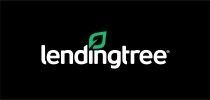Being self-employed is often considered a blessing. You get to do what you love and best of all, work for yourself.
But there are some downsides. For example, figuring out how to get a mortgage when you’re self-employed can be extremely stressful. It’s double the paperwork, and if you haven’t kept the best record of your financial history, it can delay the process for months.
So in this article, I’ll explain what you have to do in order to find your next dream home while staying your own boss.
What’s Ahead:
Is it harder to get a mortgage when you’re self-employed?
Yes – you’re seen as more of a risk
If you’re self-employed, it’s harder to get a mortgage. This is primarily because mortgage loan providers will look at not only your income but also the long-term viability of your business.
Most lenders are going to look at things like where your business is (geographically), how strong your capital situation is, the estimated demand for the product or service you sell, and if your income is sufficient enough to not only last but also to make a mortgage payment consistently.
And if you’re self-employed, you already know how complex it can be to document your income. It’s not like you have a clean W-2 or standard paystubs that you can show your mortgage lender (as you would if you were an employee of another company).
If you’re a W-2 employee, aside from raises or promotions, you’ll tend to see very little fluctuation in your income from year to year. If you’re a small business owner, however, that income can fluctuate widely.
Business write-offs make your income look lower than it is
Another factor that makes it difficult to get a mortgage when you’re self-employed is the income that you’re reporting. In many cases, self-employed individuals will write off their business expenses.
Doing this is a tax advantage because it lowers your taxable income. The downside, however, is your income may appear a lot smaller than it is – meaning you can’t qualify for as big of a mortgage.
Not only do you appear to have a lower income, but the debt you carry will have a bigger impact. For example, if your business income was $100,000 and you have $20,000 in debt, your debt-to-income ratio is 20%. Not great, but not terrible, either.
Now say you write off $50,000 in business expenses. Your “income” becomes $50,000, suddenly doubling your debt-to-income ratio to 40%. This will make you a less desirable candidate for a mortgage.
Documents you’ll need when you go to get a mortgage

When you go to get a mortgage as someone who’s self-employed, you’ll not only need to provide personal information but also information about your business. That being said, here are the most common documents you’ll need to produce when applying for a mortgage.
Tax returns from the past two years
The first, and probably most important thing you’ll need to bring is your tax returns from the past two years.
Keep in mind, you’ll need to provide both your personal and business tax returns so the lender can get a complete picture of your financial situation.
Form 4506-T
Form 4506-T is an IRS document that gives your lender permission to request transcripts for your tax returns. When loaning you hundreds of thousands of dollars, your lender is going to want to ensure that the information you’re providing them on your tax returns matches what the IRS has on file. Form 4506-T allows them to do that.
To give some perspective on this, if you’re a regular W-2 employee, odds are you won’t have to sign and submit a 4506-T, because a lender can easily verify your past income. But without a W-2, lenders are going to want to look back multiple years to see how your income has trended (hopefully upward).
Business verification
These are documents that prove you’re self-employed and can usually be verified in a number of ways. The most common is a DBA – Doing Business As. This is a document that shows your business name and what name you’re operating under.
Outside of a DBA, you can typically provide other types of documentation, such as proof of business insurance, a list of your current clients and the work you do for them, or proof from some type of professional organization that verifies you’re a legitimate business.
Each lender will have different requirements so it’s important to know what they’re looking for in case the documentation takes a while to obtain.
Business license
Your business license is issued by your state and validates that you are, in fact, a legitimate business. You should have received this when you registered your business originally, but if you don’t have a copy, the state should be able to provide one to you.
Again, find this in advance, as sometimes it can take a while for these documents to be reproduced and sent to you.
Profit and loss statements
A profit and loss statement (often referred to as simply “P&L” or income statement) is one of the most important documents you can produce as a business. This is an organized statement that shows all of your business revenue and expenses, and a resulting profit or loss because of those revenues and expenses.
Typically you’ll see these quarterly or annually, but you can also produce a monthly P&L if needed. In most cases, an accountant or your accounting software can produce these for you in short order.
Bank statements
Your lender might want to see personal bank statements, so have those ready just in case, but usually, they’re after your business bank statements. If you don’t already have a business bank account, you should.
Whether it’s an official business account (which I highly recommend), or just a separate account you use for business, it’s important that you’re splitting your personal and business expenses cleanly so the lender can see exactly how your cash flow is being managed within your business accounts.
Credit report
Obviously the lender is going to want to see a copy of your credit report, as well as the credit report for your business, assuming it has one. The most important piece they’ll look for is the debt obligations you have – both personal and business – as well as the monthly payments required for those debts.
The purpose here is for the lender to see if you can actually afford a mortgage payment. If your business cannot sustain a mortgage payment, then they’ll want to know if you need to dip into your personal funds to supplement it – which is a higher risk.
Proof of current rent or mortgage
Since few of us pay by check anymore (you can usually verify with a canceled check), the easiest way to verify this is through bank statements. But the lender is most likely going to want to see proof of your current housing payment – whether rent or mortgage.
This allows the lender to see how big of a jump (if any) you’re making in your monthly payment with the new mortgage.
Proof of additional income
If you’re self-employed but have another side hustle, part-time job, spousal income, Social Security, or other forms of income, it’s important to find proof of that, as it’ll help your chances of getting approved.
How to get a mortgage when you’re self-employed
1. Make sure you have steady and/or increasing income levels

It’s normal to have fluctuations in your business income, but showing a few years of steady, or even increasing income is important. You’ll be submitting your tax returns, as well as a 4506-T so the lender can verify this income, so if you’re a new business, have highly-volatile income, or you’ve been posting consistent losses, don’t bother applying until you can steady the ship.
Your lender is going to use this information to analyze your gross revenue and expenses, giving them a clear idea of your profits and taxable income. By looking at the nature of your business, they’ll also be able to gauge whether or not this is sustainable.
For example, is your business based on a trend, is it cyclical in nature, or should there be a consistent level of demand moving forward? These are just some of the types of questions lenders will consider when looking at your income.
2. Have at least two years under your belt
In RARE cases, lenders will approve a mortgage for a business that’s only been in operation for a year. This would require substantial assets to reduce the risk, and even then it’s still unlikely. Therefore, in most cases, you’ll need to show at least two full years of running your business. This means clients, revenues, and consistency for both.
You’ll also want to make sure you have clean business records. This means documented earnings, separate bank statements, and anything else that shows the progress of your business being separate from your personal life and income.
3. Have strong credit
A mortgage lender is going to want to see that you have a strong history of making payments on your debt. Any type of red flag, such as a bankruptcy or foreclosure, will most likely disqualify you immediately (unless a lot of time has passed and you’ve shown significant improvement).
Also be mindful of things like late payments, collection accounts, and other negative marks on your credit. These are all factors that go into your credit score that you should be aware of before applying. Having a good credit score (I recommend 700+) will help you immensely.
If you have debt, now is the time to work on paying it down, as well. If your debt-to-income ratio is over 40%, I would wait until you can work your balances down a bit first. Ideally, you want to be under 20%, but you can probably still qualify at 30%.
4. Be ready to make a sizable down payment

Having a bigger down payment is going to help your mortgage lender feel more at ease, and may even reduce some of the negative impacts of having less-than-stellar credit. In most cases, being self-employed is no different (in terms of how much of a down payment you should be making) than being a regular W-2 employee.
However, if you can swing it, I would recommend trying to put down at least 30%, unless your business credit and income are so good that it doesn’t warrant that. This might seem a bit high, but it will let your lender know you have the means to make the payment, reduce the risk lending to you, as well as lower your monthly payment.
5. Target a home that you’ll actually live in
Getting a mortgage for a second property (like one for investment) comes with a higher risk in normal cases, so throwing in the fact that you’re self-employed makes it even more challenging.
If you’re self-employed, you’ll have a higher success rate applying for a loan for an owner-occupied property instead of an investment property.
6. Ensure you have cash set aside
On top of your down payment, I strongly recommend that you have cash set aside to keep yourself and your business going during slow times.
Being self-employed, you’re going to see ups and downs in your income. Therefore having a large cash reserve set aside for emergencies will not only help the lender feel more confident about giving you a mortgage but will also help you weather the storm if things end up not going well for your business.
Where to get a mortgage if you’re self-employed
While you can probably go anywhere to ask about a mortgage, I have a couple of favorites that you should check into.
Reali Loans
Reali Loans is an online lender that makes the home-buying process super easy. The application process is streamlined and you don’t need to worry about dealing with brokers, banks, and the commissions that come along with it.
You can apply online in just minutes and get the process started, and Reali Loans has already worked with plenty of self-employed individuals, so the process should be smooth. Head over to Reali Loans now to see what it’s all about.
LendingTree
 LendingTree is a loan aggregator that pits various lenders against each other to give you the best rates and terms possible.
LendingTree is a loan aggregator that pits various lenders against each other to give you the best rates and terms possible.
The starting process is very simple – you just say what kind of home you’re looking to buy, enter some personal and financial information, and LendingTree will serve up several options for you to look over.
From there, you choose the option that works best for you and move forward to filling out an application with that lender. The reason I love LendingTree is that it lets you compare rates, based on your personal qualifications, within minutes. This saves time and money.
Other mortgage options for the self-employed
Remember that not all lenders are willing to take on the risk of loaning you money for a home if you’re self-employed. So if you aren’t able to get a conventional mortgage from a lender because you’re self-employed, there are a couple of other options you can consider.
Stated income/stated asset mortgage
A stated income/stated asset mortgage (SISA) is a loan that’s based on whatever you, as the borrower tell the bank your income is. Believe it or not, the bank doesn’t verify this amount. Yes, this is a real thing.
Also called low-documentation loans, the lender might want to verify where your income is coming from, but not the actual dollar amounts. While you don’t have to prove your income, you should be ready to show a list of your income-generating assets (like property or other investments) as well as a list of your clients.
Finally, you may have to submit a 4506-T to prevent you from submitting any falsified documentation. Just remember that you may have a hard time finding this type of loan with a lender, and it will most likely come with higher rates.
No-documentation loan
If your business is new, shows a low profit, or has experienced a few years of consecutive losses, you might be eligible for a no-documentation loan.
Let me be really clear here, these are riskier for the lender, so your rate is going to be higher. If you are showing losses or your income is low, I would not advise getting a mortgage at this time – go back to the section above and prepare yourself before applying.
That disclaimer given, should you choose to move forward with a mortgage in this situation, you may have the option of getting a no-doc loan. Like a low-doc loan, few lenders are going to offer this, and the terms won’t be ideal, but it’s possible.
You may have to verify things like the source of income, depending on the lender, but for the most part, there is no documentation involved.
Summary
As you can see, getting a mortgage when you’re self-employed is a lot like getting a mortgage as a salaried employee, only your documentation is going to be a lot more, and you are going to have a stronger financial situation. This is primarily because being self-employed is a lot riskier than having a steady income from an employer.
While I did provide some options at the end as alternatives if you don’t qualify for a conventional mortgage, I would really advise against having to use those options. Your best bet would be to pay down your debts, improve your credit, and save up cash so you can get a conventional loan and not have to worry about whether you can make a payment.



